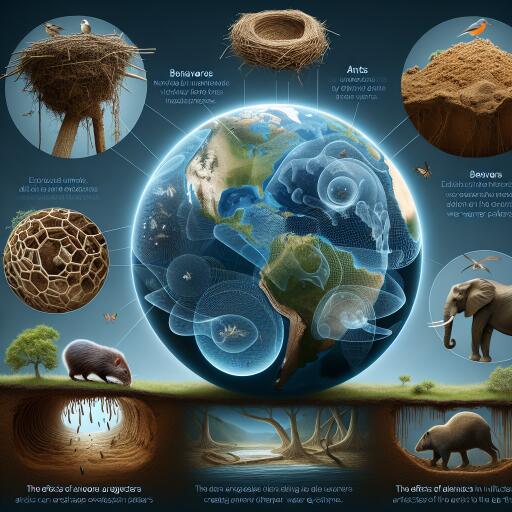
Study Reveals Impact of Animals as Architects of Earth
From beavers creating extensive wetland ecosystems to ants constructing intricate mounds of soil, the remarkable contributions of animals to shaping the natural world are under threat as biodiversity declines.
Recent research has uncovered the astonishing ways hundreds of species shape the landscapes upon which we rely, from termite mounds discernible from space to beavers forming wetlands and hippos crafting drainage networks. This comprehensive global analysis identifies 603 species, genera, or families that significantly influence Earth’s surface dynamics.
Animals exert profound effects on many of Earth’s ecosystems, with some species like tiny ants moving soil, while others like salmon dramatically transform riverbeds. These insights underscore the vast scale and diversity of the impact animals have on both freshwater and terrestrial ecosystems.
The cumulative energy exerted by these “natural engineers” is astonishing, paralleling the impacts of numerous significant floods. This study highlights several key insights:
- Unexpected Diversity: Beyond well-known examples such as beavers and salmon, the research identifies an array of species—including insects, mammals, fish, birds, and reptiles—that influence landscapes in extraordinary ways.
- Focus on Freshwater Ecosystems: Although they cover only a small portion of the planet’s surface, freshwater environments are home to over one-third of these impactful species.
- Impressive Energy Contribution: Collectively, animals contribute at least 76,000 gigajoules of energy annually in shaping Earth’s surface, a figure that underscores their substantial influence. This estimate is likely conservative due to existing knowledge gaps, particularly in regions with rich biodiversity but limited research.
Fascinating Examples: Termites construct extensive mound networks in Brazil, spanning thousands of square kilometers, mirroring the volume of sediment shifted by salmon spawning, comparable to annual floods. Even ants, through their countless minute movements, transform soil structure and drainage over time.
This groundbreaking study sheds light on the crucial yet often overlooked role animals play in landscape formation. However, the decline in biodiversity poses a risk to these natural processes.
Notably, nearly 30 percent of the identified species are rare, endemic, or threatened. This emphasizes the urgency to understand these vital geomorphic processes before they disappear, potentially causing profound impacts on ecosystems and the landscapes that harbor them.
This research emphasizes that the ecological functions performed by animals are essential, highlighting the urgent need for conservation efforts to preserve these natural architects and ensure the continued shaping of our planet’s landscapes.





Leave a Reply